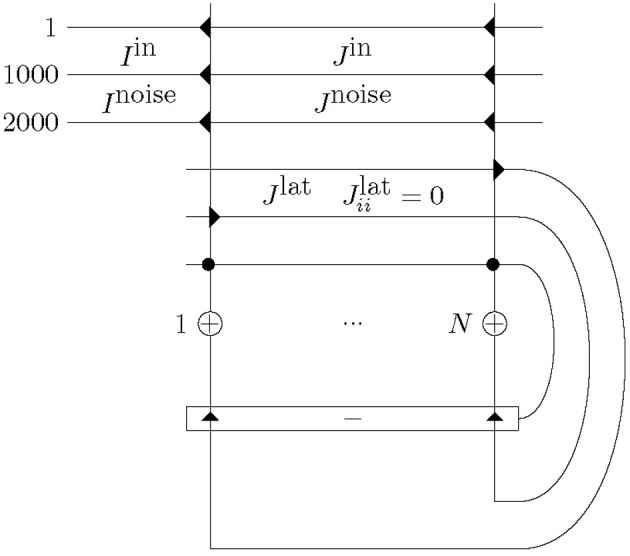Figure 1.

Network structure with N excitatory neurons (+) and one inhibitory neuron (−), and corresponding excitatory (triangle) and inhibitory (circle) synapses. Excitatory neurons are connected to one another with plastic mutual connections, Jlat. They are in competition with each other via one inhibitory neuron. Each excitatory neuron receives input consisting of a total of Ninput = 2000 afferents. Half of these, Iin, alternate between presenting a repeated spatio-temporal pattern (for 50 ms) and Poisson input (for at least 50 ms). The other half, Inoise, continuously present Poisson trains. This input is presented to each of the excitatory neurons, however, across the excitatory neurons the input has only the repeated spatio-temporal pattern in common as the alternating and continuous Poisson trains are different. Furthermore, the repeated spatio-temporal pattern is presented to each neuron at the same time. All input synapses, Jin and Jnoise, and lateral synapses, Jlat (except Jlatii), are plastic and Jlatii = 0.
